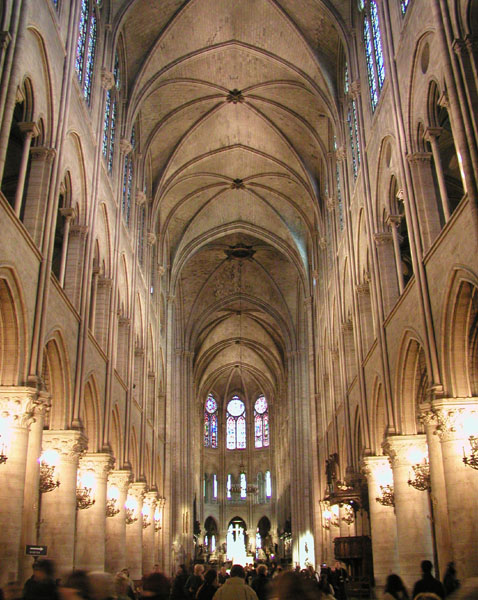
The following is from This Rock Magazine.
______________________
In contrast to most other buildings, the successful church is so constructed that the vertical element dominates the horizontal. The soaring heights of its spaces speak to us of reaching toward heaven, of transcendence—bringing the heavenly Jerusalem down to us through the medium of the church building. It’s no coincidence that the text the Church reads in the liturgy for the dedication of a church is taken from John’s vision of the celestial Jerusalem:
"And I saw the holy city, New Jerusalem, coming down out of heaven from God, made ready as a bride adorned for her husband. And I heard a loud voice from the throne saying, "Behold the dwelling of God with men" (Rev. 21:2–4).
According to John’s words, the interior spaces of the church ought to be characterized by a dramatic sense of height—in a word, verticality. It’s a fact of human experience that verticality, the massing of volumes upward, most readily creates an atmosphere of transcendence and in turn enables man to create a building that expresses a sense of the spiritual and the heavenly. It’s this transcendence that makes sacred architecture at all possible.
The building’s architectural elements—such as windows, columns, buttresses, and sacred art—should reinforce this heavenward aspiration. Likewise, the articulation of the ceiling should further create a sense of reaching toward the heavenly Jerusalem through the use of mosaics, murals, and coffering, as well as by incorporating the mysterious play of natural light into the body of the church.
Consider also that the early Christians, prior to the Constantinian era, solemnized the holy sacrifice of the Mass in inconspicuous places—most likely in homes and sometimes in the catacombs—that had no recourse to an emphasized verticality. Yet once Constantine legalized public Christian worship, the Christians quickly adopted the basilica form, in which spaces were emphatically vertical and conspicuous. Not only did the soaring spaces of such structures lend themselves to symbolizing the reaching toward God and toward things heavenly, it also represented a kingly nobility, for the basilica was the Roman "House of the King," fittingly adapted as the House of the King of Kings.
It is difficult to visualize the kind of spaces that would be created if the ceilings in such grand churches as Notre Dame, St. Peter’s Basilica, or Constantinople’s Hagia Sophia were lowered to, say, twelve feet—or even thirty feet. Despite the exemplary iconography and permanence of these structures, they would fall drastically short—literally—as sacred places, as houses of God, if their building’s proportions were reduced to reflect an emphasis on the horizontal rather than on the vertical.
This need to emphasize the reaching toward the heavens was primarily what inspired Gothic builders to develop a structural system that allowed for even greater soaring spaces. The Gothic architect knew that without an emphasized verticality, the church is emasculated, its raison d’être subverted.
______________________________
http://www.catholic.com/thisrock/2002/0205fea4.asp




2 comments:
yes, the countdown of me going to Iraq
you're so awesome
thanks lots
Post a Comment